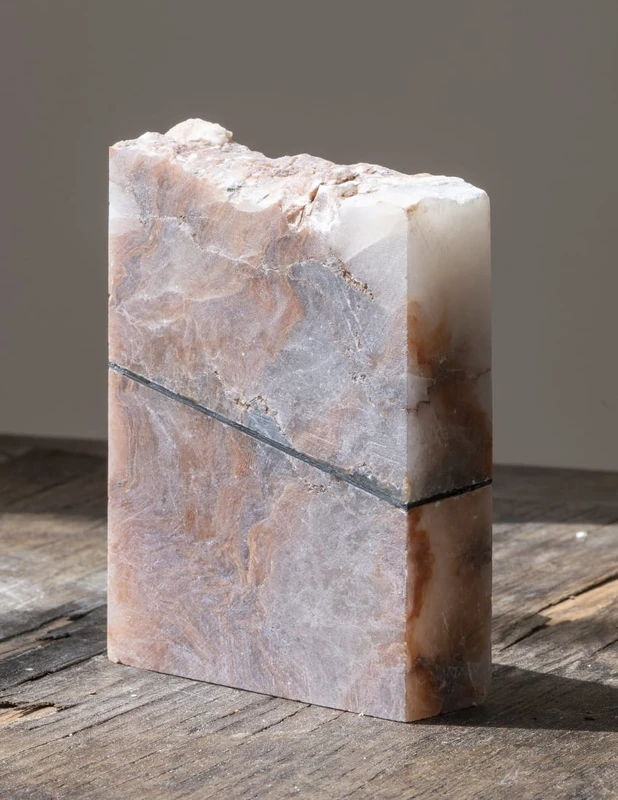Alison Wilding


b. 1948, United Kingdom
One of Britain's foremost sculptors, Alison Wilding’s work explores inherent contrasts through her innovative approach to material.
Alison Wilding has challenged expectations of sculpture since the 1970s. Her innovative practice combines a wide variety of materials, techniques and forms to create sculptures that examine contrasts, whether it be juxtapositions of containment and concealment, stability and instability, entrapment and mobility, or the disparity between the viewer’s assumption of a material and the artist’s manipulation of it.
Born in 1948 in Blackburn, Wilding studied at Nottingham College of Art from 1966 to 1967. She continued her education at Ravensbourne College of Art, London, between 1967 and 1970, after which she studied at the Royal College of Art, specialising in sculpture. Wilding rose to prominence in the 1980s as part of the New British Sculpture, a group that also included Richard Deacon, Tony Cragg and Anish Kapoor and was known for combining traditional and new industrial materials with both figurative and abstract imagery.
Wilding has relentlessly developed her practice over the course of her career. Since her early sculptural works she has consistently explored the parameters of the medium, from what constitutes sculpture to how it may be experienced. An enduring facet of her art is the manipulation of materials. Wilding rejects any traditional hierarchy of materials, whether industrial or organic, reclaimed or repurposed, and her selection frequently arises from what is available to her at any one time. A rope, a slab of stone, cast acrylic sheets or some reclaimed wood might form the starting point for a work, which develops through a process of problem-solving and negotiating with her chosen materials. Employed in eclectic combinations, they are transformed into sensual constructions of texture, colour, mass and shape.
Distinctions and disparities such as containment and concealment, darkness and light, visibility and invisibility are intrinsic to Wilding’s practice. In many of the sculptures, an object is confined within or beneath the larger structure of the work, partially concealed from the viewer and marking a border between interior and exterior. Other works explore duality by exposing the external and internal at the same time, as in her monocoque sculptures. Exploring balance, gravity and equilibrium, the monocoques are created by interlacing individual slats of wood or metal so as to become self-supporting. Here, individual elements appear to slot together solidly yet also seem in a state of mobility, as if their ability to remain stable is at the mercy of the viewer. Whether at a hand-held scale or larger than life-sized, all retain a suggestion of the monumental and therefore play on the viewer’s expectation, creating intimate and surprising encounters.
Although best known as a sculptor, drawing has increasingly become an important element of Wilding’s practice. Though the drawings—which are predominantly abstract, though several make reference to figurative forms—comprise a distinct aspect of her work, they bear similarities to the sculptures in how form, space and colour are employed.
Wilding is fascinated by the wider environmental setting of sculpture and with exploring how her objects might fit into the world. The relationship between the work and the audience is essential: her works repel the casual glance, instead requiring the viewer to engage intensely with them. Through their inherent physical expressiveness, the sculptures call on the viewer to observe, move around and take in the work from numerous angles, so that subject and object become entangled in a dynamic, tense relationship.
Wilding lives and works in London. She has taught at Brighton Polytechnic, Middlesex Polytechnic, Royal College of Art and Slade School of Fine Art. In 2018 she was appointed Eranda Professor of Drawing at the Royal Academy Schools. Her work is held in public collections including Tate, London; Musée des Beaux Arts, Calais; Victoria and Albert Museum, London; Art Gallery of New South Wales, Sydney; Scottish National Gallery of Modern Art, Edinburgh; British Museum, London; and Fonds régional d’art contemporain (Frac), Pays de la Loire.
Solo exhibitions by Wilding include De La Warr Pavilion, Bexhill-on-Sea (2018); Whitworth Art Gallery, Manchester (2013, 2018); Duveen Galleries, Tate Britain, London (2013); Museum of Modern Art, New York (1987); and Serpentine Gallery, London (1985). Her public art commissions include Migrant at Snape Maltings, Aldeburgh, and Still Water, National Memorial Arboretum, Staffordshire, and she has participated in numerous group exhibitions, including at Yorkshire Sculpture Park, Wakefield; Hayward Gallery, London; Tate Modern, London; Louisiana Museum of Modern Art, Humlebaek; and the 42nd Venice Biennale. Wilding was nominated for the Turner Prize in 1988 and 1992 and was awarded a Henry Moore Fellowship at The British School at Rome in 1989. She was elected a Royal Academician in 1999 and in 2019 was appointed an Officer of the Order of the British Empire (OBE) for her services to art.
By Viktoria Espelund